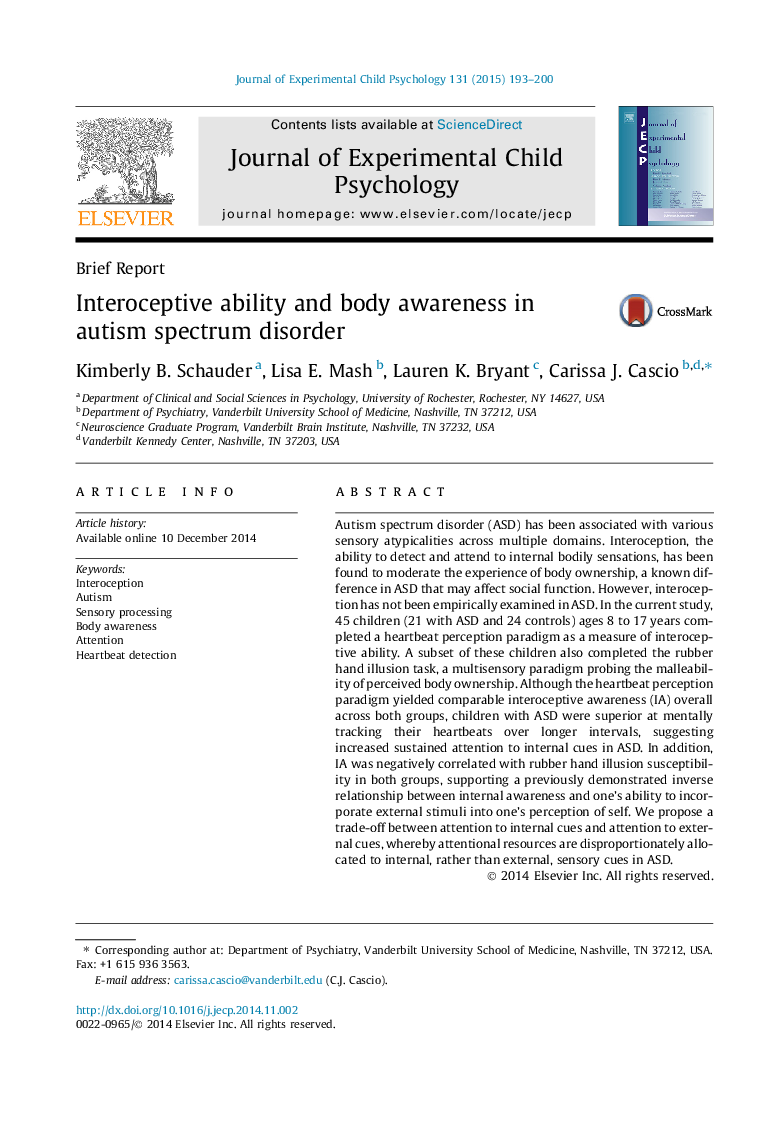| Article ID | Journal | Published Year | Pages | File Type |
|---|---|---|---|---|
| 918026 | Journal of Experimental Child Psychology | 2015 | 8 Pages |
•Children with autism show increased attention to interoceptive cues.•Interoceptive sensitivity negatively relates to rubber hand illusion susceptibility.•A trade-off of attentional resources between internal and external cues may exist in autism.•Disproportionate attention to internal cues may relate to core symptoms of autism.
Autism spectrum disorder (ASD) has been associated with various sensory atypicalities across multiple domains. Interoception, the ability to detect and attend to internal bodily sensations, has been found to moderate the experience of body ownership, a known difference in ASD that may affect social function. However, interoception has not been empirically examined in ASD. In the current study, 45 children (21 with ASD and 24 controls) ages 8 to 17 years completed a heartbeat perception paradigm as a measure of interoceptive ability. A subset of these children also completed the rubber hand illusion task, a multisensory paradigm probing the malleability of perceived body ownership. Although the heartbeat perception paradigm yielded comparable interoceptive awareness (IA) overall across both groups, children with ASD were superior at mentally tracking their heartbeats over longer intervals, suggesting increased sustained attention to internal cues in ASD. In addition, IA was negatively correlated with rubber hand illusion susceptibility in both groups, supporting a previously demonstrated inverse relationship between internal awareness and one’s ability to incorporate external stimuli into one’s perception of self. We propose a trade-off between attention to internal cues and attention to external cues, whereby attentional resources are disproportionately allocated to internal, rather than external, sensory cues in ASD.
